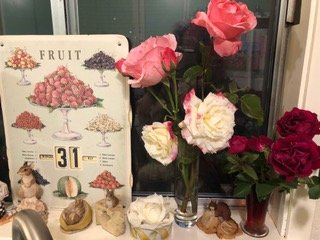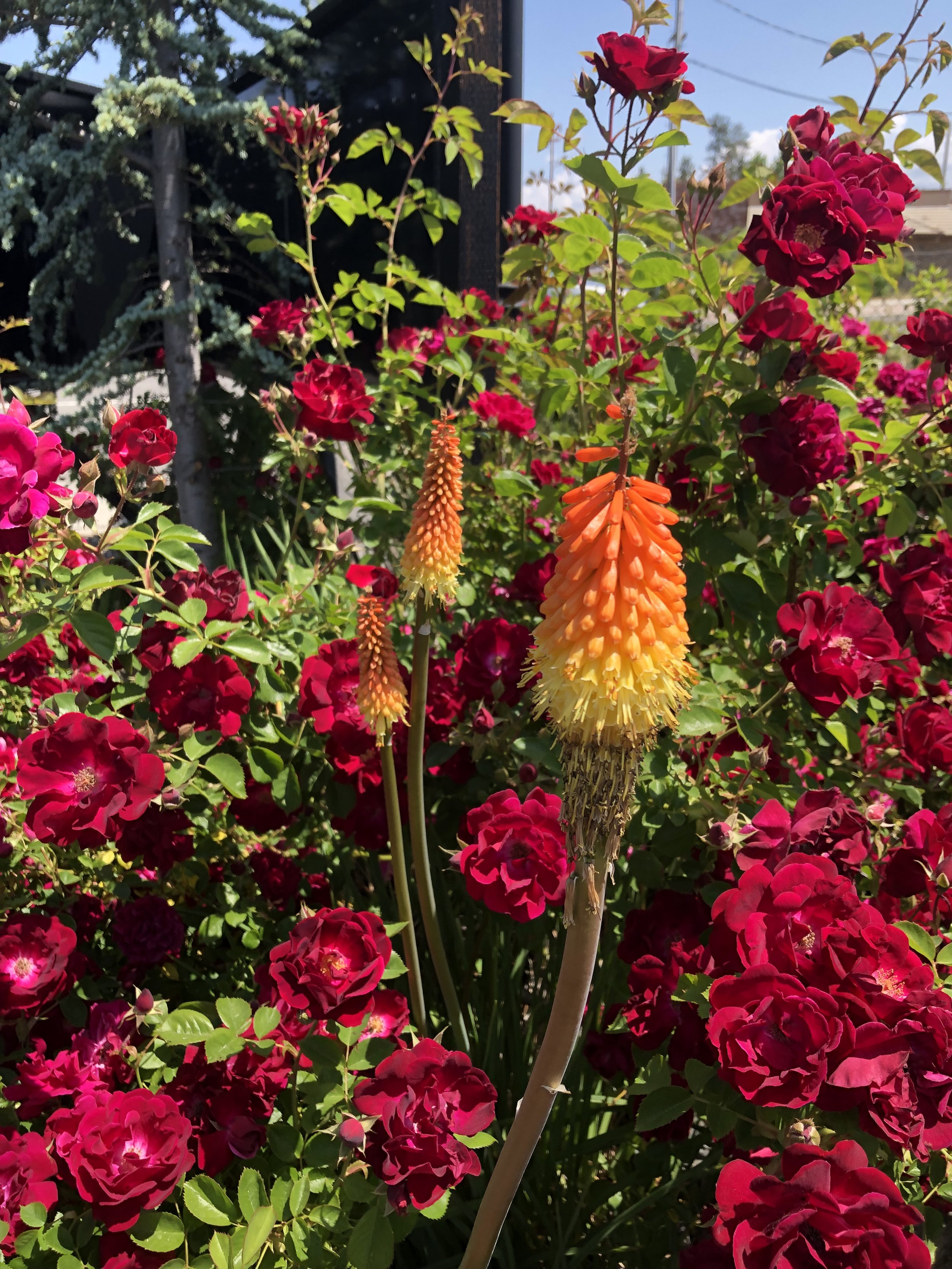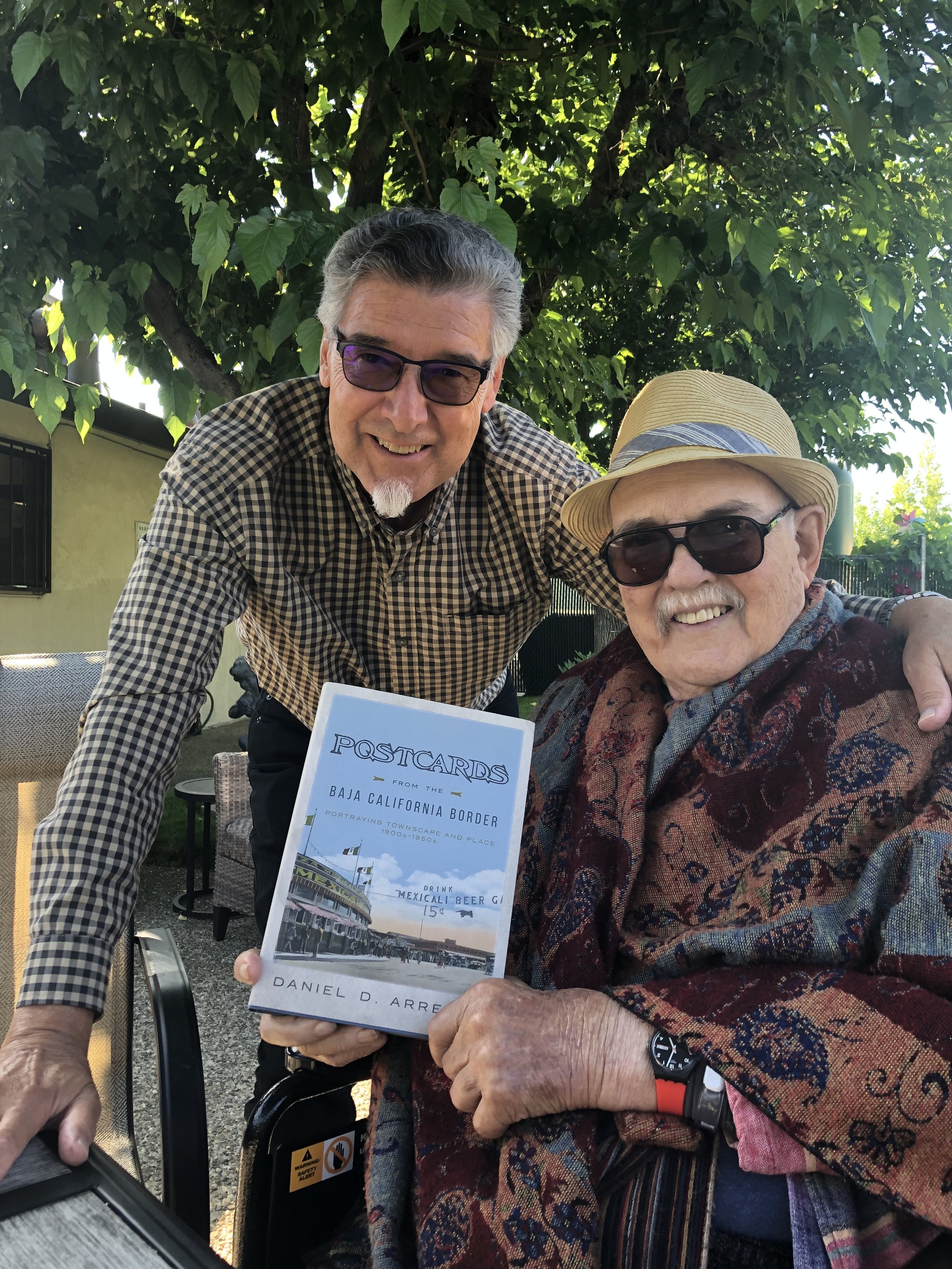Rose Gardens in the Sierra Foothills
From late May into June, Nevada County, CA has been abloom with roses that take my breath away. From the yards of Victorian cottages to the gardens of Empire Mine State Historic Park in Grass Valley, heritage roses have exploded in extraordinary abundance following a winter of snowpack that threatened to crush their branches.
I planted my first rose bushes in a waist-high, elbow deep, raised rock wall bed adjacent to the small cottage in Los Angeles where Kit and I lived for a decade. An heirloom David Austin French Lace floribunda rose produced delicate, ivory buds with a pale apricot tint that opened into very full, classic white blossoms. Spent rose petals from all my roses were saved a glass container where they dried before ending up in potpourri sachets with lavender and rose buds when the gardening season ended.
At the Lodge where Kit now resides, various shades of white, peach, pink, gold and red roses have been planted over the past three decades. This summer, they’ve bloomed with abandon around the edges of the property. Reaching tall heights, they’ve spread at will in a riotous jumble across the back of the lot where I take Kit on daily walks. At the exit, a creeping confusion of red shrub roses have become entangled with tall stands of South African Red Hot Poker (torch lilies) the color of fiery molten lava.
Unable to resist sharing these finds with the residents and visitors at the Lodge, I keep a green plastic gardening tub and pair of Fiskars at the ready in my car for snipping blooms as I leave in the cool of the evening. Once home, I arrange bouquets for the nurse’s station near a small dining area where residents gather for meals. When I carry a fragrant bouquet to a resident and hold it under their nose, they breathe in its perfume and immediately, color infused from their own memories of roses spreads across their face.
Last week, I found myself leafing through my old copy of Martha Stewart’s Gardening Month by Month, published in 1991 when Kit and I lived at Breakfast Creek in Southern Boone County, Missouri. In her richly penned and illustrated chapter on roses, Stewart wrote:
“My taste in roses remained relatively uninformed until I made my first gardening trip to England. Traveling with friends, I visited Great Dixter, Hidcote, Barnsley House, Sissinghurst, Upton House, Pusey, Rousham Park, Petworth, and Mottisfont Abbey…. In one afternoon (at Mottisfont Abbey), I learned more about roses than I had in a lifetime—centifolias, gallicas, rosa rugosas, damasks, musks, bourbons, and grandifloras.”
After Stewart returned to her 6-acre property in Westport, CT following her English gardening tour, she devoured American and Canadian catalogues and ordered purple roses and striped varieties in reds, pinks and lavender while writing down the name of every rose and anything she could gather about their habits. She then designed her own rose garden and filled it with 72 heritage bushes planted in four double-sided rows.
Last week, I made a pilgrimage to the rose gardens at Empire Mine State Historic Park in Grass Valley with Daniel Arreola—a UCLA graduate student of Kit’s who had traveled from New Mexico to spend time with his mentor, father figure and friend. Discovering that we’d arrived an hour before the Visitors’ Center opened, I knocked on the door, pleaded our case, and a kind park ranger allowed us early admittance.
For an hour, we strolled up winding walkways lined with 40 monumental trees, each numbered and identified in a tree guide from the Visitor’s Center. Before long we reached blooming rose hedges that line the final approach to the Cottage—the onsite residence of San Francisco businessman William Bourn, Jr. and his family after he acquired a controlling interest in the mine in 1869.
In the silence of the park, one can feel a connection that goes back 10,000 years to a time when the Foothill Nisenan people populated the western Sierra Nevada. Their lands were made up of the Yuba, American, and Bear River drainages and parts of the Feather River, long before the 1848 gold discovery brought tens of thousands of prospectors to California, devastating the lives of the Nisenan.
Arriving at the Cottage, Dan headed in one direction to view the fountains and reflecting pool on the front lawn of the residence. My goal was the historic rose gardens. Descending a stone path off the back side of the Cottage carriage house, I walked beneath a rose arbor and entered a maze that mirrored the grand gardens that Martha Stewart experienced decades ago while getting her early education in roses in England. Each heirloom bush in the collection is identified by a name and date—Austrian Copper 1590, Rosa Rubrifolia Pre-1830, Jacques Cartier 1868, Irish Fireflame Hybrid Tea 1913—that speaks of its historic and geographic origin.
Looking up from the rose beds enclosed within two gardens, one is greeted by masses of crimson red and pastel pink roses spilling over walls of rock blasted by miners from veins of gold-bearing quartz buried deep beneath the park’s now silent surface. In the coming month I hope to return again and again to this quiet sanctuary just a few miles from Kit’s Lodge and its abundant rose beds. For in both gardens, peace and renewal can be found.






